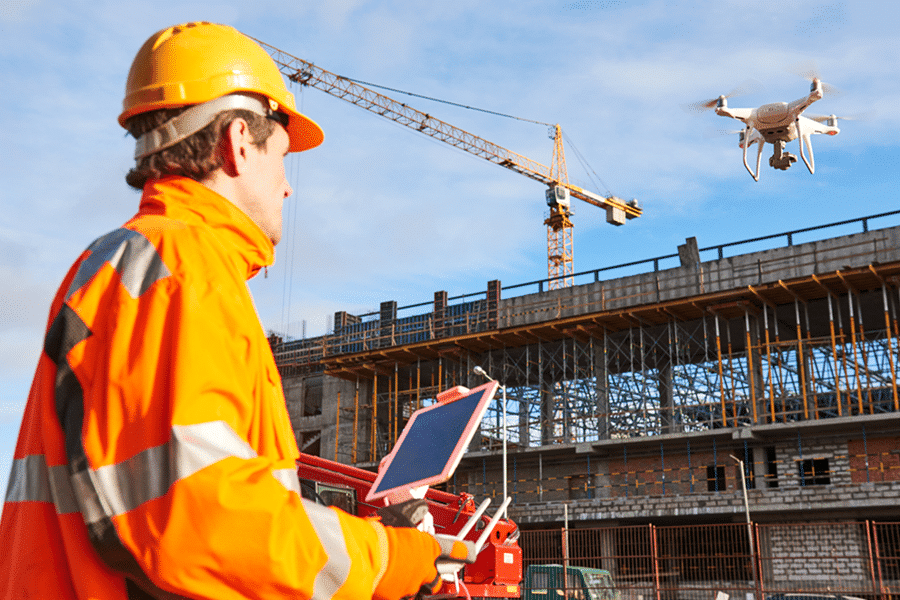From augmented reality glasses to exosuits to smart boots, wearables have become one of the latest buzzwords in the construction industry, but what is their real return on investment?
Like every other industry, the construction sector is facing the hamster wheel challenge of technology – what does it include, which technology tools to use and why.
Today’s digital world offers the ability to use critical software to streamline planning and operations; however, innovation in technology has offerings well beyond tax, accounting, administration and digital marketing.
What is construction technology?
Think of construction technology as an opportunity to elevate your quality as well as timely progression of work packages during the construction phase of your project.
Including tools, machinery, modifications and software, construction technology offers your business the opportunity to save time and money while delivering better outcomes for your clients.
Bluebeam’s real-time collaboration software is an example of established technology that will tie together your project delivery — a paperless and real-time solution to manage quality and ensure a cohesive approach to the scope of work underway.
Modular construction is also gaining traction as a tried-and-true way in which the construction industry is harnessing technology to develop responsive and fit-for-purpose solutions.
Emerging technologies might sound a little like science fiction, but they are here — and helping businesses remain competitive.
The latest construction technology solutions
The list of emerging technologies that support the construction and other industries grows by the day, but we’ve focused on three top-level solutions.
- Virtual and augmented reality.
When we think about VR, invariably what comes to mind is headsets and gaming. However, there’s so many more applications.
AR combines the user’s physical surroundings with computer-generated information in real time. By merging both the physical and digital views, AR in construction helps project teams and employees drive efficiency and boost confidence in their projects.
Project designers and managers can also develop key insights about the results of their plans well in advance of construction through using a 2D plan to develop a 3D model with building information modelling (BIM) software.
On-the-job training comes with a set of risks to projects and people — and VR can reduce this. Imagine being able to train your people in high-risk simulated environments without the risk to your people or the project.
- Construction wearables — keep track of your people’s performance, health and well-being
In 2018, Australia’s wearable technology industry was valued at around $23 billion and forecast to reach $54 billion by 2023. Wearables enhance your construction team’s safety and efficiency.
GlobalData’s Wearable Tech in Construction report predicts that growth in the wearable tech industry will be driven by many countries’ ageing workforces using them in remote support roles for a younger generation of workers through AI and smart glasses technology, as well as wearable exoskeletons as an aid for workers’ physical support during strenuous tasks where there is risk of injury.
Wearable technology such as smart watches takes PPE to a new level. In high-stress environments, smart watches can keep track of heart rates, blood oxygen levels and even if your workers have been injured in a fall onsite.
Other wearables include:
- Smart helmets that monitor a worker’s vital signs
- Eyewear such as the Microsoft HoloLens to increase construction on-site design review, quality assurance/quality control validation and remote assistance
- Smart boots with sensors to monitor motion, location, falls and fatigue
- Exoskeletons — metal frameworks fitted with motorised muscles to multiply the wearer’s strength
- Drones and robot swarms
Welcome to the future. Robots, robotic swarms and drones will emerge as key solutions to fast-tracking construction for complex environments — for example, sites that are too dangerous for humans to work on.
Common use of robotics in the construction industry may include:
- Articulated robots are most commonly used in industrial settings and may feature rotary joints resembling a human arm. Tasks these robots commonly undertake include manufacturing and welding.
- Cartesian robots are industrial robots that are used for tasks such as 3D printing.
- Collaborative robots, also known as cobots, are commonly used for transport, prefabrication and assembly. They work directly with human workers to improve productivity and enhance safety.
- Unmanned aerial vehicles — otherwise known as drones — are primarily used to monitor construction workflow and jobsite logistics, inspecting construction sites to assess structural integrity and for maintenance assessments.
- Self-driving vehicles are ideal for complex sites that may be unsafe for human workers. They include excavators, bulldozers and ATLs.
- Robotic swarms are small robots that work with others as a swarm and perform construction tasks. These robots can work independently and cooperate with others like termites — constructing immense structures without any central command to ensure that they stay in harmony with the other surrounding robots.
How to select the right technology for your construction business
New technology is emerging all the time, and confusion about selecting the right tools for your business may freeze some construction businesses into inaction.
Remember though, your competitors are likely to be using different technologies to build better and faster, and if your operation is to remain relevant you will also need to harness the right tools.
What should you look towards?
Consider your most common projects and the challenges they present. Are you working on congested, restrictive or complex sites? Where have the inefficiencies largely happened in projects and what have been your biggest challenges with workforce safety, accuracy and productivity?
Look towards tools and technologies that improve the safety of your people, enhance accuracy and help ensure your project is on time and within budget.
Lastly, remember that the right technology will help you win and complete more projects — increasing your profits, protecting your business’s bottom line and longer-term future.












